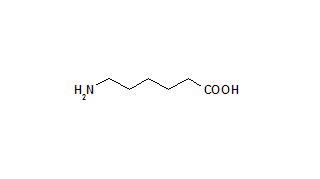TORONTO -- Physicians should consider antifibrinolytic therapy plus standard estrogen therapy as first-line treatment for acute menorrhagia in adolescents, Canadian experts said.
"We have to be more aggressive in treating these patients. This is now standard protocol for us. We start both the hormones and the antifibrinolytics as soon as we admit them, and it reduces bleeding significantly," said Dr. Nathalie Fleming, a fellow in pediatric and adolescent ob.gyn. at Sainte-Justine Hospital in Montreal.
"We need a formal study to determine the advantage of this protocol in terms of decreasing the need for transfusions and D&Cs, but our own experience in treating acute menorrhagia with this combination has been excellent," Dr. Diane Francoeur, also of the hospital, said at the annual meeting of the North American Society for Pediatric and Adolescent Gynecology.
Antifibrinolytics, which prevent clot dissolution, have been used extensively in the fields of hematology and oncology. Until recently however, their use specifically for menorrhagia has been confined to Europe.
"It's something most U.S. ob.gyns. know very little about, but they have an excellent, well-documented safety and efficacy profile," said Dr. Judith Simms-Cenden, a Florida ob.gyn. who tried the approach on two patients after consulting with the Montreal group.
"I had tried everything else on these patients and they were not responding, but I noticed results almost immediately with antifibrinolytic therapy," said Dr. Simms-Cenden of the University of Florida in Gainesville.
Ten to 15% of all women experience dysfunctional uterine bleeding (DUB), but the incidence is much higher in adolescents, ranging from 55% to 82% in the first 2 years after menarche and decreasing to about 20% in the first 4 years.
"Many of the menstrual cycles in the first years are anovulatory because of the immaturity of the hypothalamic, pituitary, and ovarian axis, and this causes incomplete shedding of the uterine lining and prolonged bleeding," she said at the conference.
Although acute menorrhagia is fairly uncommon, even in this susceptible age group, it needs to be managed aggressively.
"These patients are very sick by the time they come into the hospital. It's amazing how long they can tolerate this, but they often don't say anything until they are very symptomatic because they are afraid of getting a pelvic exam," Dr. Francoeur said.
Because of this fear and the fact that pelvic pathology is unlikely in these patients, Dr. Francoeur does not perform pelvic exams on these patients before initiating treatment. She added that even if pathology were present, it would be difficult to see because of the blood.
"We almost always need to admit them," added Dr. Fleming, explaining that these patients are often severely anemic and weak with orthostatic signs.
Treatment for DUB at her center consists of Premarin 25 mg IV every 4-6 hours, or Premarin 2.5 mg orally every 4-6 hours, which can sometimes be more difficult to tolerate because of associated nausea.
In addition, the antifibrinolytics Amicar (100 mg/kg IV every 6 hours with a maximum of 5 g/dose) or Cyklokapron (1.5 g by mouth three times a day) are started at the same time.
Physicians should be wary of attributing all adolescent DUB to anovulation because a significant amount of menorrhagia is caused by an underlying bleeding disorder, Dr. Fleming warned.
In a retrospective chart review of 39 cases of acute adolescent menorrhagia that presented over a 12-year period, Dr. Fleming noted that 87.2% were due to anovulation and 10.3% to hematologic disturbances.
"Investigating for hematologic disorders is very important and, unfortunately this is not done enough. We used to think that doing a coagulogram was enough, but that doesn't pick up the majority of these problems. We need to use bleeding time and von Willebrand's testing," she stressed.
Von Willebrand's disease is the most common hematologic disorder in women, occurring in about 1% of the population, and the initial presenting symptom may be abnormal menstrual bleeding or hemorrhage at menstruation.
COPYRIGHT 2001 International Medical News Group
COPYRIGHT 2001 Gale Group



